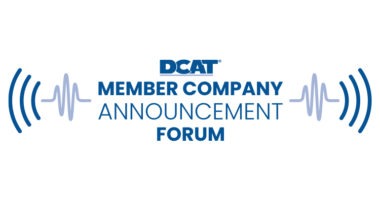Valeant’s Acquisition of Salix: The Implications in Specialty Pharma
Valeant Pharmaceuticals International, Inc. has completed its previously announced acquisition of the specialty pharmaceutical company, Salix Pharmaceuticals, Ltd., for $173 per share or a total enterprise value of $15.8 billion. The deal followed Valeant’s unsuccessful efforts to acquire the specialty pharmaceutical company, Allergan, in 2014, which was later acquired by Actavis. DCAT Value Chain Insights (VCI) examines the implications for Valeant and the specialty pharmaceuticals market.
Looking at the deal
In acquiring Salix, Valeant won over a bid by rival specialty pharmaceutical company, Endo Pharmaceuticals, to acquire Salix. The move follows Valeant’s protracted, but ultimately unsuccessful efforts to acquire Allergan in 2014, which Actavis later acquired for a total value of $70.5 billion, in a deal that closed earlier this year. Although not at the order of magnitude of that deal, Valeant does add to its specialty pharmaceutical portfolio with Salix, which specializes in gastrointestinal drugs with a portfolio of 22 products The move also followed Salix's decision in 2014 to terminate a merger agreement with Cosmo Pharmaceuticals S.p.A., a specialty pharmaceutical company based in Lainate, Italy. So what did Valeant gain and how does the move position the company in the specialty pharmaceutical market?.
Salix's product positions
Salix Pharmaceuticals, headquartered in Raleigh, North Carolina, develops and markets prescription pharmaceutical products and medical devices for the prevention and treatment of gastrointestinal diseases. Salix's strategy is to in-license or acquire late-stage or marketed proprietary therapeutic products, complete any required development and regulatory submission of these products, and commercialize them through Salix's 500-member specialty sales force. For the year ended December 31, 2014, Salix generated net product revenue of $1.133 billion.
Salix's chief product is Xifaxan (rifaximin) tablets, a gastrointestinal-specific oral antibiotic, which accounted for 36% of the company's product sales in 2014, or $405.4 million. Xifaxan 550 mg was approved by the US Food and Drug Administration (FDA) in March 2010 for reduction in risk of overt hepatic encephalopathy (HE) recurrence in patients 18 years of age or older. HE is a chronic worsening of brain function that occurs when the liver is not able to remove toxic substances from the blood. Xifaxan 550 mg has orphan drug exclusivity, granted by the FDA, for HE through March 24, 2017. The company has 15 patents potentially providing combined protection on the Xifaxan molecule until 2027 and method-of-use patent protection for indications for HE, traveler’s diarrhea (TD), and irritable bowel syndrome (IBS) indications until 2029. Additionally, the FDA approved Xifaxan 200 mg in May 2004 for the treatment of patients 12 years of age and older with TD caused by noninvasive strains of E coli. Xifaxan sales accounted for approximately 36%, 70%, and 70% of the company's consolidated revenue in 2014, 2013, 2012, respectively. Prior to its acquisition by Valeant, Salix said that it was exploring potential additional indications, formulations, clinical trials, and co-promotion arrangements to capitalize on the potential for Xifaxan, including development programs in IBS, Crohn's disease, and early decompensated chronic liver disease.
The next largest product area for Salix is diabetes, specifically for Glumetza/Cycloset, which accounted for 27% of its product sales in 2014, or $308 million. Glumetza is a once-daily, extended-release formulation of metformin in 500 mg and 1000 mg dosage strengths that incorporates patented drug-delivery technology and is indicated as an adjunct to diet and exercise to improve glycemic control in adults with Type 2 diabetes. Currently, the company has four patents for the Glumetza 500 mg dose product, with expiration dates in 2016, 2020 and 2021.There are three patents for Glumetza 1000 mg dose product, with expiration dates in 2020 and 2025. There are also pending applications that, if issued, will provide further protection until 2025. In connection with settlement agreements entered into by Santarus, a first generic filer was granted the right to sell a generic version of Glumetza in February 2016 and two subsequent generic filers were granted the right to sell a generic version of Glumetza in August 2016. Under certain circumstances, however, Glumetza could face generic competition at an earlier date, according to Salix's annual filing. Salix’s other diabetes product, Cycloset (bromocriptine mesylate) tablets, is indicated as an adjunct to diet and exercise to improve glycemic control in adults with Type 2 diabetes mellitus;
The next largest product area for Salix are drugs for treating IBS (Apriso/Uceris/Giazo/Colazal), which accounted for 20% of its 2014 sales, or $227 million. Apriso (mesalamine) extended-release capsules is a locally acting aminosalicylate that was approved by the FDA in October 2008. Salix says it is the only delayed and extended-release mesalamine product that is FDA-approved for the maintenance of remission of ulcerative colitis (UC) in adults.Salix said it expects that Apriso will be patent-protected until 2022. Apriso sales, together with sales from Uceris (budesonide), Giazo and Colazal, three other products to treat UC, accounted for approximately 20%, 13%, and 12% of the company’s consolidated revenue in 2014, 2013, and 2012, respectively. Uceris (budesonide MMX) extended-release tablet is indicated for the induction of remission in patients with active, mild to moderate UC; Uceris (budesonide) rectal foam is indicated for the treatment of ulcerative proctitis (approved for marketing by the FDA, but not yet marketed). Giazo (balsalazide disodium) tablets is indicated for the treatment of mildly to moderately active UC in male patients 18 years of age and older. Colazal (balsalazide disodium) capsules is indicated for the treatment of mildly to moderately active UC in patients 5 years of age and older.
Zegerid, an immediate-release formulation of the proton pump inhibitor, omeprazole, accounted for 10% of Salix's product sales in 2014, or $112.6 million. Salix acquired Zegerid in connection with its acquisition of Santarus. Currently, Salix has three patents which it expects provides protection of Zegerid products, with expiration dates in mid-2016. There are also pending applications that if issued will provide further protection until 2016. In September 2014, following litigation with Par Pharmaceutical, Inc., relating to Par's launch of a generic version of Zegerid capsules in 2010, Santarus and the Curators of the University of Missouri, the licensor of the challenged Zegerid patents, reached a settlement agreement with Par. In connection with the settlement, Par made a one-time payment of $100 million to an escrow account approved by Santarus and the University of Missouri. In January 2015, Salix reached an agreement with the University of Missouri and received $64 million as its share of the settlement.
According to Salix's annual filing, it owns no manufacturing facilities and uses third-party providers for its manufacturing.
Gains for Valeant
The acquisition of Salix Pharmaceuticals by Valeant adds to Valeant's specialty pharmaceutical portfolio. Valeant is a specialty pharmaceutical and medical device company that develops, manufactures, and markets branded, generic and branded generic pharmaceuticals, over-the-counter products (OTC), and medical devices (contact lenses, intraocular lenses, ophthalmic surgical equipment, and aesthetics devices). In developed markets, its focus is mainly in eye health, dermatology, and neurology therapeutic classes. In emerging markets, its focus is primarily on branded generics, OTC products, and medical devices. In 2014, the company reported revenues of was $8.3 billion, of which 75% were in developed markets and 25% in emerging markets. Its 2014 revenues was bolstered by Valeant's $8.7-billion acquisition of Bausch + Lomb in 2013 as well as other smaller acquisitions in 2013: Obagi Medical Products, Inc. (a company specializing in topical aesthetic and therapeutic skin-health systems), Natur Produkt International (a specialty pharmaceutical company in Russia), and certain assets from Eisai Inc. (US rights for Targretin (bexarotene) capsules and Targretin(bexarotene) gel 1%, used to treat skin problems arising from cutaneous T-cell lymphoma). In addition, in January 2014, Valeant acquired Solta Medical Inc., a company that designs, develops, manufactures, and markets energy-based medical device systems for aesthetic applications and also agreed to acquire Precision Dermatology, a company specializing in dermatology and topical products. Earlier this year, Valeant acquired the worldwide rights to Dendreon’s Provenge (sipuleucel-T) product and certain other assets of Dendreon for $400 million in cash for the assets, which realized combined revenues of approximately $300 million in 2014.
Valeant had one new molecular entity approvied in 2014: Jublia (efinaconazole) for treating nychomycosis of the toenails due to Trichophyton rubrum and Trichophyton mentagrophytes. Valeant Pharmaceuticals acquired Jublia (efinaconazole) from its 2008 acquisition of Dow Pharmaceutical Science.
On a manufacturing basis, Valeant operates 40 facilities. Its headquarters and one of its manufacturing facilities are located in Laval, Quebec. Key manufacturing facilities serving developed markets are in Rochester, New York; Waterford, Ireland; Greenville, South Carolina; Tampa, Florida; Berlin, Germany; and Steinbach, Manitoba, Canada. Key manufacturing facilities serving emerging markets are in Jinan, China; Mexico City, Mexico; San Juan del Rio, Mexico; Indaiatuba, Brazil; Jelenia Gora, Poland; Rzesow, Poland; Belgrade, Serbia; Long An, Vietnam; and Cianjur, Indonesia.
In the announced merger agreement, Valeant said that the combination of Salix and Valeant is expected to yield greater than $500 million in annual cost savings from the cost base of the combined company. Synergies are expected to be achieved within six months of close, primarily from reductions in corporate overhead and R&D rationalization, with the cost to achieve these synergies to be approximately 65%. Valeant said that consistent with its approach to integrating its previous acquisition of Bausch + Lomb, there are no planned reductions to Salix’s specialty sales forces or hospital, key account, and field reimbursement teams. The optimal size of the primary care sales force will be determined through the integration process. As of December 31, 2014 , Valeant had approximately 16,800 employees, which included approximately 8,200 in production, 6,200 in sales and marketing, 1,600 in general and administrative positions and 800 in the R&D (including regulatory affairs and quality assurance)




